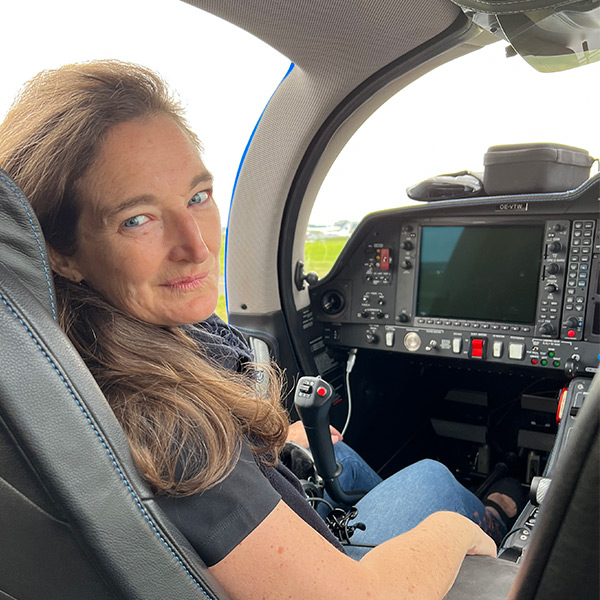Garmin GPSMAP 295 Adds WAAS Capability
In the realm of handheld GPS (global positioning system) units, Garmin International's GPSMap 295 is one of the biggest and brightest. The four-inch, 16-color screen and pilot-configurable functions also make it one of the most popular. Now, Garmin can add wide area augmentation system (WAAS) capability to the GPSMap 295's charms.
WAAS improves the accuracy, integrity, and availability of basic GPS signals. This system will allow GPS to be used as an even more precise means of navigation for en-route travel and nonprecision instrument approaches in the United States. However, its main benefit is that it enhances vertical navigation so that GPS signals can be used safely for Category I approaches (basic instrument landing system [ILS] approaches are Category I) to selected airports. WAAS adds ground stations to the GPS satellite network, improving GPS signal accuracy to seven meters. In August 2000, the FAA approved WAAS for VFR use while the testing necessary to certify the system for IFR use is completed.
As handheld GPS units can only be used for VFR navigation, Garmin chose to enter the WAAS arena through its GPSMap 295 to bring pilots on board while the WAAS certification continues. "The 295 is the ultimate use of WAAS right now," said Pete Brumbaugh, spokesman for Garmin. "When WAAS is certified for IFR operations, we'll be prepared to bring that to the cockpit." Users will notice improved GPS altitude readings; altitudes given by units without WAAS have a tendency to fluctuate widely. WAAS stabilizes these readings, making vertical navigation with GPS more realistic.
Garmin offers the software update to current GPSMap 295 owners on its Web site (www.garmin.com ). The GPSMap 295 retails for approximately $1,450 with an Americas database through various dealers. For more information, contact Garmin International Inc., 1200 East 151st Street, Olathe, Kansas 66062; telephone 913/397-8200; or fax 913/397-8282.
Lightspeed QFR Solo And X-C Headsets
When Lightspeed debuted its first headset in 1996, the objective was to produce high-quality active noise reduction (ANR) headsets at reasonable prices. Lightspeed's new QFR (Quiet Flight Rules) series adds to this by offering an exceptionally quiet passive headset along with an ANR version.
We tested the Solo (the passive model) and the X-C (the ANR model) side by side in various aircraft. The X-C truly lowered the sound level when worn in a Piper Archer. The Solo produced a quiet ride as well, although without the lower frequency damping of the ANR X-C. The X-C generates its optimum active noise attenuation in the 120-to-200-hertz range, about on par with a four-stroke engine's range of 150 to 200 Hz.
While not as streamlined as typical David Clarks, AvComms, or the like, the ear cups on the QFR sets aren't unnecessarily bulky. In fact, the low-profile headband is slimmer than most others and didn't result in any noticeable discomfort during our test flights. Both units come with a nylon bag that is almost roomy enough for two sets and has pockets for charts and a pen.
We did notice a difference in the microphone when compared to other units we've tested recently. During one flight with the X-C, the mic cut one pilot's voice in and out with the wind muff on. Without the muff, the mic picked up the pilot's voice just fine with no breaking up. Yes, the mic is very quiet - a plus, unless you have a stage-whisper voice.
The X-C's control unit houses the batteries and features an on/off button for the electronics as well as a battery "fuel gauge" button. One of three LED lights comes on when this button is depressed. If you're low on juice (10 percent or less) the red light illuminates. Separate volume controls for each ear balance differences in your hearing, and a mono/stereo switch allows for optimum voice transmission (in mono mode) and music (in stereo mode). The Solo has the same volume control and mono/stereo switch, but it doesn't use a battery.
The Solo gives an average noise reduction rating of 28.7 decibels across a frequency range of 125 to 8,000 Hz. The X-C adds 12 to 14 decibels of noise attenuation with the ANR on. The X-C uses two AA batteries, estimated to last 20 to 25 hours. At press time, we had 20 hours and counting on the original batteries. The units we tested weigh 12.8 (Solo) and 15.4 (X-C) ounces without cords. The QFR Solo retails for $149; the QFR X-C is $279. For more information, contact Lightspeed Aviation, 7301 Southwest Kable Lane, Number 300, Portland, Oregon 97224; telephone 800/332-2421; fax 503/968-7664; or visit the Web site ( www.anrheadsets.com ).
CX-2 Flight Computer From ASA
Aviation Supplies and Academics (ASA) has completely revamped its electronic flight computer into the CX-2. About the same size as a Palm-type personal digital assistant, the CX-2 also mimics the popular handheld computers with its hard black cover and case. Inside, ASA replaced the chip that drives the unit and doubled the number of functions available.
A larger screen makes it easier to read computations, and I found the CX-2 intuitive enough to complete most common in-flight calculations with no reference to the manual. Also, functions can be used together, where an answer from a previous calculation is automatically inserted in a subsequent computation. The CX-2 includes weight and balance functions in table format and a memory function to store information on the aircraft you fly. For those of us who hated tracking down watch batteries used in older model flight computers, the CX-2 operates on four AAA batteries.
The CX-2 comes with a five-year warranty, and it retails for $79.95 through various dealers. For more information, contact ASA, 7005 132nd Place Southeast, Newcastle, Washington 98059; telephone 800/272-2359, or 425/235-1500 outside the United States; fax 425/235-0128; or visit the Web site ( www.asa2fly.com ).



